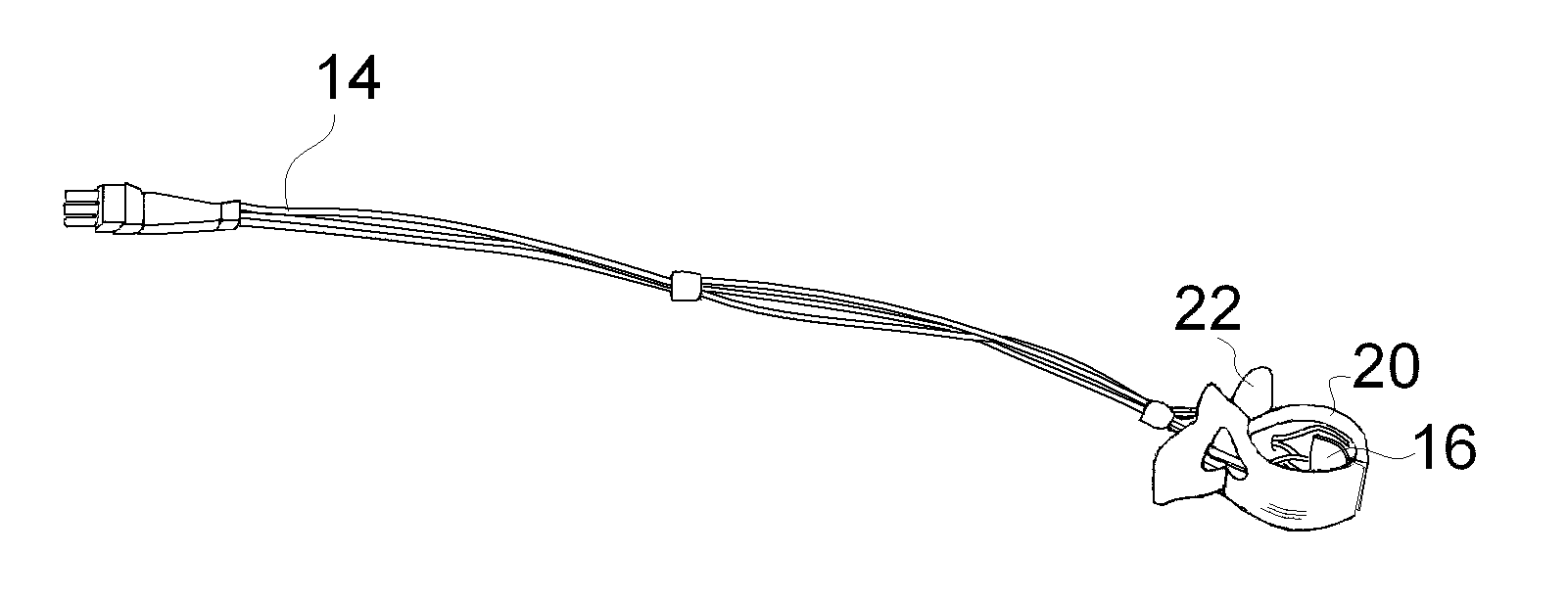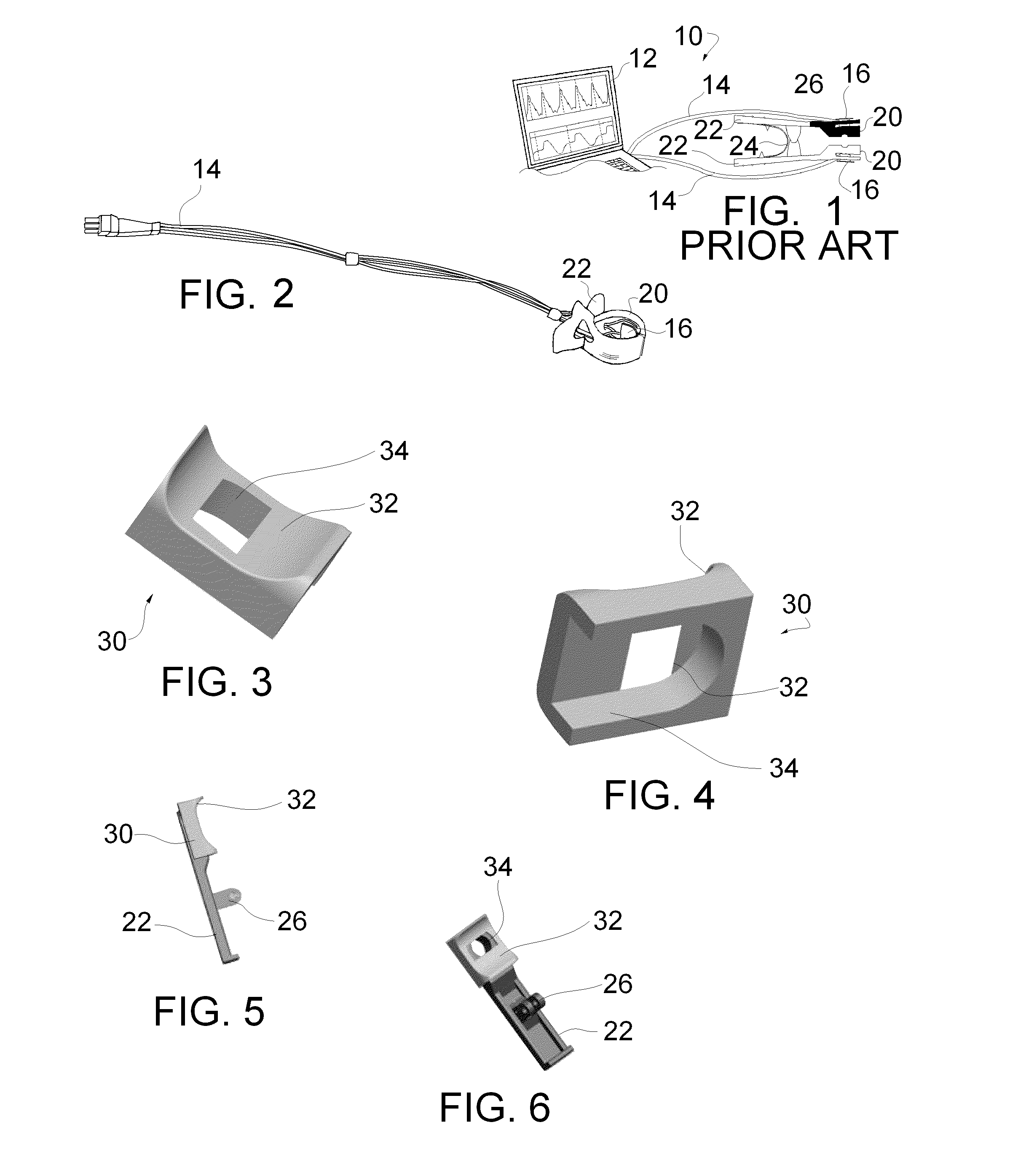Saddle Faced Small Animal Sensor Clip
a sensor clip and saddle face technology, applied in the field of non-invasive photoplethysmographic sensor clips, can solve the problems of affecting the accuracy of the image, so as to prevent the clip from relocating over time, facilitate the alignment, and prevent the effect of tissue contusion
- Summary
- Abstract
- Description
- Claims
- Application Information
AI Technical Summary
Benefits of technology
Problems solved by technology
Method used
Image
Examples
Embodiment Construction
[0044]In summary, the present invention relates to a noninvasive photoplethysmographic sensor platform 10, namely a sensor clip, for small animals, such as rats and mice that are typically utilized in a laboratory environment. The platform generally is operable on a computer or controller 12 with a display such as a lap top. The controller 12 may also include signal processing elements such as an external signal processing box. Cables 14 extend from the controller 12 to sensors 16 held within the animal engaging end 20 of a clip. The clip includes gripping elements 22, a biasing spring 24 and a pivot connection 26. Photoplethysmographic measurements on laboratory animals have most often been accomplished on restrained and / or anesthetized animals. Further, in the pulse oximetry field there has been a lack of adequate photoplethysmographic sensors for small mice (and even small rats), until the advent of the Mouse Ox™ brand pulse oximeters by Starr Life Sciences.
[0045]FIG. 1 is a sche...
PUM
 Login to View More
Login to View More Abstract
Description
Claims
Application Information
 Login to View More
Login to View More - R&D
- Intellectual Property
- Life Sciences
- Materials
- Tech Scout
- Unparalleled Data Quality
- Higher Quality Content
- 60% Fewer Hallucinations
Browse by: Latest US Patents, China's latest patents, Technical Efficacy Thesaurus, Application Domain, Technology Topic, Popular Technical Reports.
© 2025 PatSnap. All rights reserved.Legal|Privacy policy|Modern Slavery Act Transparency Statement|Sitemap|About US| Contact US: help@patsnap.com


